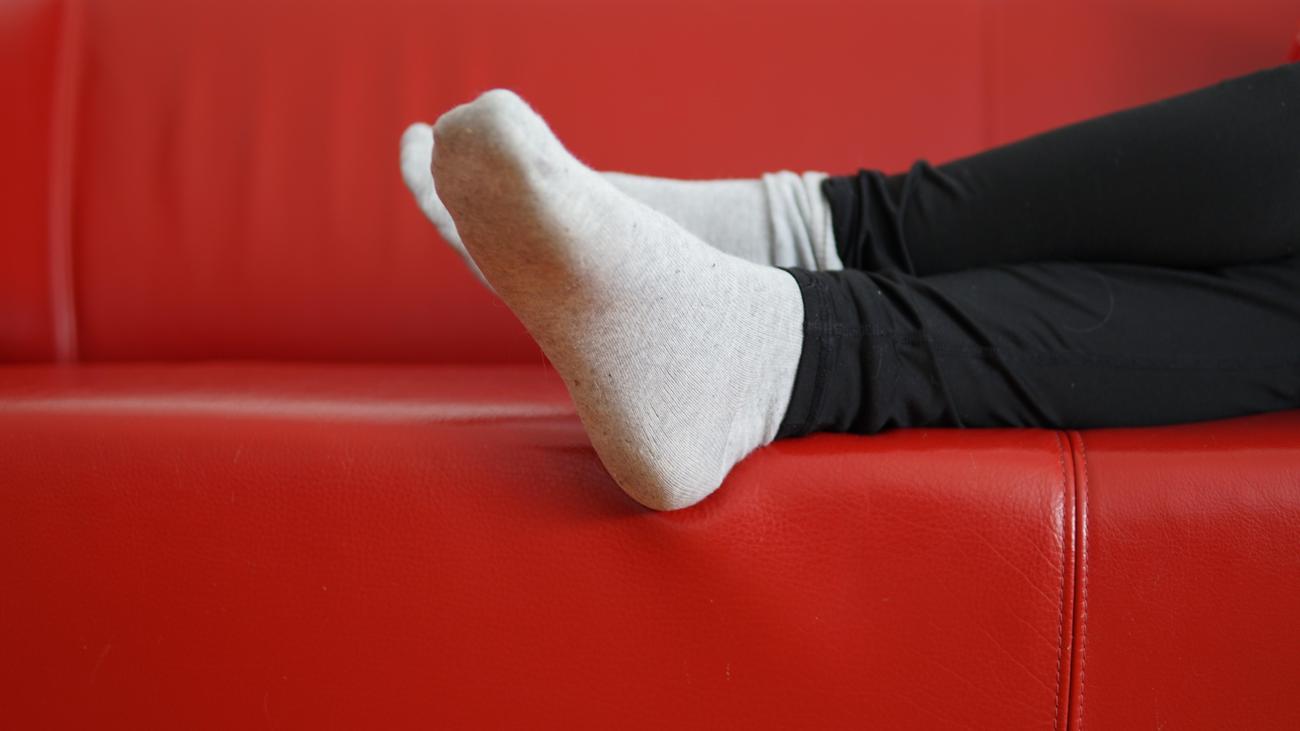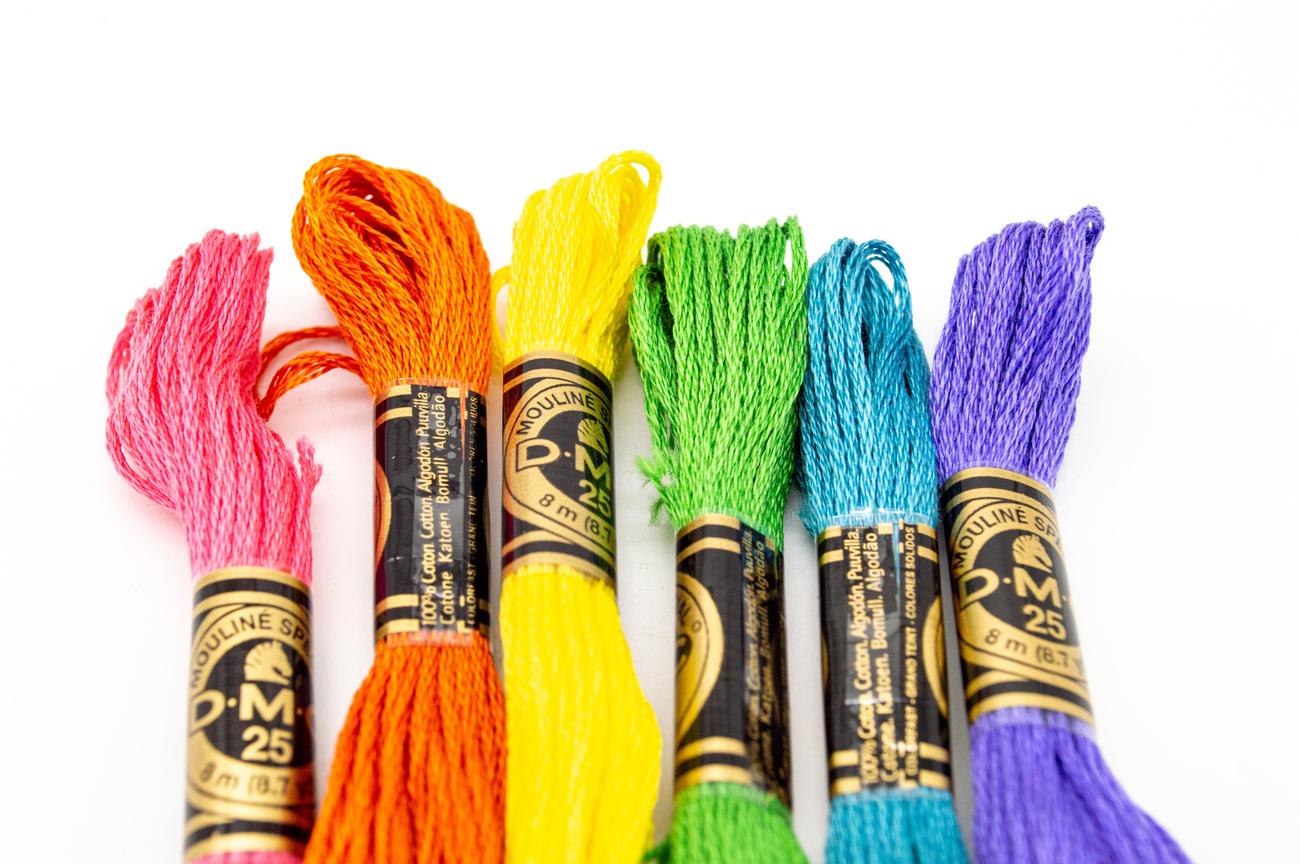Unveiling the fascinating world of socks, this article examines the origins and evolution of these humble foot coverings in a quest to uncover the hidden stories behind their quirky appeal. Aptly titled “Funky and Fascinating: Fun Facts About Socks Unveiled,” this piece delves into the etymology of the word “sock,” tracing its roots and exploring how these seemingly insignificant garments have made their mark on popular culture. Through this exploration, we will reveal the secrets behind mismatched socks, unravel the history of funky patterns, and showcase the unexpected impact these simple accessories can have on one’s wardrobe. Join us on this whimsical journey as we celebrate the unsung heroes of the fashion world – socks.

Fun Facts About Socks
Socks may seem like a simple everyday accessory, but did you know they actually have a fascinating history? From their ancient origins to their unexpected impact on popular culture, socks have a rich and diverse background that often goes unnoticed. Join me on a journey to uncover some fun facts about socks that will have you looking at this humble foot coverings in a whole new light!
1. Socks and the Birth of Theater
Let’s start with a historical tidbit that may surprise you. Did you know that the word ‘sock’ actually comes from the Roman word ‘soccus’? In ancient times, soccus referred to a loose-fitting slipper worn by theater artists. These early performers would wear socks to protect their feet during long hours of rehearsals and performances. So, the next time you step into a theater, take a moment to appreciate the connection between socks and the birth of theater itself.
“Socks and theater have an interconnected history, with the word ‘sock’ itself originating from the Roman theater slipper.”
2. The Disappearing Act
Have you ever wondered why it’s so easy to lose a sock? Well, you’re not alone. On average, a family of four members loses a whopping 60 socks every year! That’s right, those pesky disappearances can cost a family approximately $300 annually. It’s as if socks have a secret desire to explore the world without their match. It’s a mystery that has eluded many, leaving us with an eternal question: where do all the missing socks go?
“Socks have a knack for vanishing, leaving us wondering where their adventurous souls have wandered off to.”
3. Socks Galore
Have you taken a moment to count how many pairs of socks you own? The average person owns about 12 pairs of socks. That’s 24 individual socks, each with their own unique pattern or color. From cozy winter socks to funky argyle designs, socks offer a simple yet expressive way to add personality to our outfits. With so many styles to choose from, it’s no wonder that socks have become an essential part of our wardrobe.
“There’s a whole world of socks out there, waiting to add a touch of flair to your feet.”
4. Early Sock Origins
Socks have been keeping our feet warm for centuries, but did you know that they were first worn in the 9th century by the Arabs? These early socks were far from the comfortable and breathable options we have today. They were made from animal skin, which provided necessary insulation but lacked the breathability and comfort of modern materials. Thankfully, sock technology has come a long way since then, ensuring we can have both style and comfort.
“The early sock pioneers, the Arabs, paved the way for the cozy foot coverings we know and love today.”
5. From Greeks to Global Pandemics
Socks have witnessed the rise and fall of empires throughout history. They were first worn by the Greeks, who recognized the importance of foot protection during physical activities. Fast forward to more recent times, and socks have even played a role in global pandemics. During the outbreak of Spanish influenza in 1918, people were advised to wear woolen socks as a preventive measure against the disease. Socks truly have a story to tell, having been there for us through both triumphant and challenging times.
“Socks have stood the test of time, accompanying us through the highs and lows of history.”
6. Nylon Stocking Riots
Here’s a fascinating anecdote: after World War II, nylon stockings became a highly sought-after item. This led to the infamous “nylon stocking riots” of 1945, where women fought over limited supplies of stockings. It’s incredible to think that a humble garment could evoke such passion and chaos. Thankfully, today we have a wide range of sock options that cater to every taste, avoiding any potential riot-inducing shortages.
“Who would have thought that socks could spark riots? The nylon stocking craze of the 1940s still leaves us in awe.”
7. Socks for All
Socks have evolved over the centuries from being a privilege reserved for the rich to an ordinary piece of clothing accessible to all. In ancient times, socks were considered a luxury, often crafted from silk or fine wool. As time went on, advances in manufacturing and design allowed socks to become more affordable and accessible to people from all walks of life. Today, socks not only serve a practical purpose but can also be a form of self-expression and fashion statement.
“Socks have broken free from their exclusive past, making fashion and comfort accessible to everyone.”
Socks may be a humble item of clothing, but their history is anything but ordinary. From their theatrical origins to their status as a symbol of fashion and individuality, socks have a story to tell. So, the next time you slip on a pair of socks, take a moment to appreciate the fascinating journey they have taken throughout history. After all, every step you take is supported by their rich and quirky legacy.
fun facts about socks
Socks, aren’t they fascinating? We wear them every day, yet there’s so much we don’t know about these humble accessories. Did you know there are funny jokes about socks that can leave you in stitches? Check out these hilarious jokes here and get ready to chuckle your socks off!
But wait, there’s more! If you’re a fan of brain teasers, how about solving a riddle about socks? Challenge yourself with this mind-boggling riddle here and see if you can crack it!
Now, let’s talk about Bombas socks. You might be wondering, what is so special about them? Well, wonder no more! Discover the amazing features that make Bombas socks unique and exceptional here. Trust us, you’ll be amazed!
Enough about fun and uniqueness, let’s dive into the practical side of socks. Have you ever wondered how to fold socks neatly? No worries, we’ve got you covered! Learn the secret art of sock folding here and say goodbye to messy sock drawers forever.
And lastly, for all those who struggle with putting on compression socks, we’ve got the solution for you. Click here to discover the tips and tricks for effortlessly putting on those compression socks.
So, whether you’re in the mood for a good laugh, a mental challenge, or seeking practical advice, these links have got you covered. Happy exploring, fellow sock enthusiasts!
The Origins of Socks: Unraveling the Etymology Behind the Name
“Socks, a seemingly simple garment, have a rich history that stretches back to ancient times. Let’s delve into the fascinating etymology behind the name and unravel the origins of these beloved foot coverings!”
Uncovering the Ancient Origins
“In the depths of history, socks emerged as early as the Stone Age, around 5000 BC. Can you imagine? Our ancient ancestors fashioned them from animal skins, seeking warmth and protection for their feet. Talk about ingenuity!”
Fun Fact: In the 8th century BC, the Greeks took sock fashion to the next level, sporting socks made from matted animal hair. Now that’s a fashion statement!
The Language of Socks
“But where did the term ‘sock’ come from? Prepare for an intriguing linguistic journey. The word ‘sock’ actually has a delightful Old English origin. Derived from the word ‘socc,’ it means ‘light slipper.’ Just imagine slipping into a pair of soft, comfortable socks, just like a cozy slipper for your feet!”
Quote: “The Old English roots of the word ‘sock’ make it even more intriguing. It captures the essence of these delightful foot coverings, light and cozy, just like a slipper.”
Roman Footwear Influence
“Unbeknownst to many, the Roman Empire made its mark on the evolution of socks. The Latin term ‘soccus’ refers to a ‘light, low-heeled shoe’ worn by Roman comic actors. Can you visualize it? These Roman socks were a precursor to our contemporary understanding of this humble yet cherished garment.”
Fun Fact: The Romans themselves had their unique take on sock fashion. They wrapped animal skins around their feet and tied them around their ankles. A truly ancient and resourceful fashion choice!
Ancient Greek Socks
“Ancient Greek civilization had its own contribution to the world of socks. They referred to a type of sock-like footwear as ‘piloi’ or ‘phorbes.’ Does this remind you of modern-day socks? Ancient civilizations had their sock game strong!”
Quote: “The Greeks, with their ‘piloi’ and ‘phorbes,’ added a touch of sophistication to the sock scene, paving the way for the diverse sock styles we enjoy today.”
The Intriguing Mystery
“While the true origin of socks remains shrouded in mystery and the sands of time, one thing is clear: socks have been a staple in global fashion for centuries. From Stone Age animal skin coverings to the fashionable socks of Roman comic actors and ancient Greek style statements, these timeless foot coverings have played a substantial role in human civilization.”
Quote: “The enigma surrounding the origins of socks adds to their allure. They are a testament to our shared humanity, uniting us through the centuries in our quest for fashionable and comfortable foot coverings.”
In Conclusion
“Socks, an integral part of our daily lives, have a surprisingly intricate history. By unraveling the etymology behind the name, we discover the cultural significance and diverse origins of these beloved foot coverings. From the warmth and protection sought by our Stone Age ancestors to the fashion statements made by ancient Greek and Roman civilizations, socks have truly stood the test of time.”
Quote: “Next time you slip on a pair of cozy socks, take a moment to appreciate the rich history and cultural heritage they carry. These funky and fascinating foot garments connect us to our ancient past while adding a touch of whimsy to our modern-day wardrobes.”
8 Fascinating and Surprising Facts About Socks
[youtube v=”X_jyuSv7sWs”]
The Origin of the Word “Sock”
The word “sock” has an interesting origin. Derived from the Old English word “socc,” meaning “light slipper,” it accurately describes the early form of this essential garment. Even before that, the Latin word “socces” referred to a thin, light shoe worn with sandals, giving rise to the enduring combination of socks and flip-flops. As we can see, the concept of socks has been around for centuries, serving as comfortable footwear throughout history.
The Connection between Socks and Baseball
Did you know that the terms “socks” and “baseball” have an unexpected connection? In the early 20th century, newspaper editors needed to shorten the team names of the Boston Red Sox and the Chicago White Sox to fit into headlines, leading to the adoption of the word “socks” as a stand-in for “stockings.” Thus, these two beloved baseball franchises became known as the Red Sox and the White Sox, respectively.
Socks as a Symbol of Status
In the past, socks were more than just practical clothing items; they were a symbol of wealth and status. Around the year 1000, men of wealth and royalty would wear expensive knee socks as a display of their elevated position in society. The higher the silk content in the socks, the more prestigious the individual. This tradition of using socks to denote social standing has persisted throughout history, explaining why a nice pair of socks remains a popular Christmas gift.
The Revolutionary Invention of Knitting Machines
The invention of knitting machines in 1589 by Englishman William Lee revolutionized the process of sock production. These machines could knit socks at a rate eight times faster than hand knitting. As a result, the length of men’s socks transitioned from knee height to ankle height during the 20th century. With the introduction of longer trousers, there was no longer a need to cover the lower leg. At the same time, women’s fashion embraced shorter skirts, leading to the rise of stockings with colorful designs, a trend that endures to this day.
The Nylon Stocking Riots
During World War II, the shortage of nylon stockings in the United States caused widespread chaos. Nylon, used primarily for making parachutes, became scarce. After the war ended in 1945, the anticipation for nylon stockings was so high that when a limited supply went on sale, riots erupted across the country. Women flocked to stores, causing chaos and even injuring one another, all in an effort to secure a precious pair of nylon stockings. These events became known as the “nylon stocking riots.”
The Essential Functions of Socks
Apart from being a fashionable accessory, socks fulfill essential functions. They wick away moisture from your feet, preventing them from becoming overly sweaty. Additionally, socks act as a protective barrier, minimizing friction and preventing blisters and chafing. By keeping your feet dry and comfortable, socks also inhibit bacterial growth that can lead to odor. So, the next time you put on a pair of socks, remember their vital role in supporting foot health and comfort.
Socks throughout History
Long before the introduction of modern materials, our ancestors found innovative solutions to keep their feet warm and protected. The ancient Greeks, for example, used matted animal fur as a primitive form of sock. However, we should be grateful for the advances in sock production that have given us the comfortable and stylish options available today.
A Connection to Our Ancient Past
Socks not only serve a practical purpose but also connect us to our ancient past. From the Roman word “soccus” to the Greek “piloi” and “phorbes,” sock-like footwear has been intertwined with human civilization for centuries. Today, socks continue to add a touch of whimsy and personality to our modern wardrobes, reminding us of the enduring legacy of this seemingly ordinary garment.
In the words of an ancient Greek poet, “Socks are a testament to the ingenuity and creativity of mankind, providing comfort for our feet and a glimpse into the rich tapestry of our history.”
Remember, as you explore our vast catalog of socks and leggings, delight in the knowledge that these everyday items have a rich and fascinating past that stretches back through time. So, let us celebrate the humble sock and appreciate the tales they can tell.

FAQ
Q1: What is the origin of the word “sock”?
A1: The word “sock” is derived from the Old English word “socc,” meaning “light slipper.” It further traces its origins to the Latin term “soccus,” which referred to a “light, low-heeled shoe” worn by Roman comic actors.
Q2: Who were the first people to wear socks?
A2: Socks have been worn since ancient times, with the Greeks being among the earliest known wearers in the 8th century BC. However, the exact origin and usage of socks is unclear, as they likely provided warmth and protection for people’s feet during those times.
Q3: What were the earliest socks made of?
A3: The earliest socks were made from animal skins. The Romans, for example, would wrap their feet in animal skins and tie them around their ankles to create a form of primitive footwear.
Q4: How have socks evolved throughout history?
A4: Socks have a rich and diverse history, witnessing the rise and fall of empires and even a global pandemic. Originally a privilege reserved for the wealthy, they have evolved to become an ordinary piece of clothing accessible to all. From their humble beginnings made of animal skins, socks have gone through various materials, designs, and functions over the centuries.
Q5: What is the relevance of socks in popular culture?
A5: Socks, despite often going unnoticed, have had unexpected impacts on popular culture. From the infamous nylon stocking riots of 1945 to the whimsical patterns and quirky designs we see today, socks have become a form of self-expression and a way to add fun to any wardrobe. Their evolution and fascinating tidbits continue to captivate and entertain sock enthusiasts around the world.
- Sept 31 Myth: Unveiling Calendar Secrets - March 18, 2025
- How Long & Till December 18, 2025: Accurate Countdown Guide - March 18, 2025
- Discover Japanese Artists: A Complete History - March 18, 2025
















